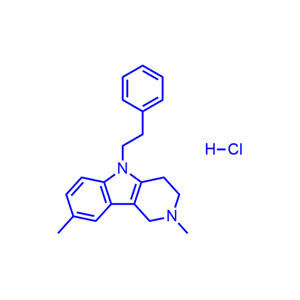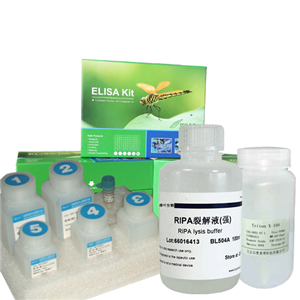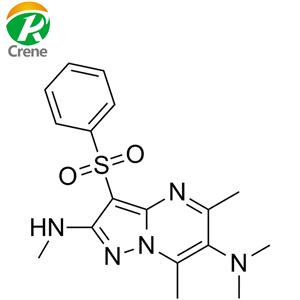| 名称 | AVN-492 |
| 描述 | AVN-49 is a potent and selective 5-HT6R Antagonist (Ki: 91 pM). |
| 激酶实验 | Assessment of AVN-492 selectivity was performed on a panel of 69 therapeutic targets including receptors, ion channels, neuromediator transporters, and enzymes. The full list of the targets is presented in the Supplementary Material. AVN-492 interactions with therapeutic targets were assessed by either equilibrium competitive displacement of corresponding radiolabeled ligands or inhibition of corresponding enzymatic activities. The studies were performed at Eurofins in accordance with their internally optimized procedures as briefly described in. The displacement of radioligands and inhibition of enzymatic activities were measured at AVN-492 concentration of 1 M in duplicates. Affinities of AVN-492 to both the 5-HT6R and 5-HT2BR were assessed in an equilibrium competitive [3H]LSD displacement assay. AVN-492 was provided at different concentrations and [3H]LSD was kept at a concentration of 1.50 nM for 5-HT6R, or 1.20 nM for 5-HT2BR. The ligands were added to corresponding receptor-membrane suspensions (plasma membranes obtained from engineered HeLa cells expressing recombinant human 5-HT6R or engineered CHO-K1 cells expressing recombinant human 5-HT2BR). The cell membrane/ligands mixtures were incubated in buffer of the following composition: For 5-HT6R: 50 mM Tris-HCl, pH 7.4, 150 mM NaCl, 2 mM ascorbic acid, 0.001% BSA – 120 min at 37?C; for 5-HT2BR: 50 mM Tris-HCl, pH 7.4, 4 mM CaCl2, 0.1% ascorbic acid – 60 min at 37?C. Specific radio-ligand binding was measured as a difference between total binding and binding in the presence of excessive concentration of cold serotonin [1]. |
| 动物实验 | For pharmacokinetic, behavior, and toxicity studies, male Wistar rats (220–242 g), male CD1 mice (24–30 g), male SHK mice (20–25 g), and male Balb/C mice (15–20 g) were used. Rodents were obtained from Jackson Laboratories and housed in a standard laboratory animal facility in groups of 5–7 animals per cage. Before entering the investigation, the animals were acclimated at least for seven days. Obese C57BL/6 male 18-week-old mice were obtained from Jackson Laboratories. The mice were fed on a high-fat diet (60% kcal Research Diet 12492i) from the age of 6 weeks. Upon arrival, the mice were maintained on the same high fat diet with free access to both food and water. The mice were individually housed in solid bottom static isolators with Bed-O'Cobs? bedding inside a BioBUBBLE? clean room that provided HEPA-filtered air into the clean room environment at a rate of 100 complete air changes per hour. All treatments and procedures including body weight determinations, drug administration, and glucose measurements were carried out in the clean room environment [1]. |
| 体外活性 | AVN-492与[3H]LSD竞争结合到5-HT6R的亲和力估计为91 pM(IC50^b = 194 pM)。相比之下,AVN-492对5-HT2BR的亲和力,Ki^b = 170 nM(IC50^b = 268 nM)。尽管AVN-492会被人类微粒体代谢,但在高达10 M浓度下,它并没有显著抑制五种主要的人类重组CYP同工酶,即CYP3A4、1A2、2C9、2C19和2D6 [1]。 |
| 体内活性 | AVN-492在啮齿动物中具有高口服生物利用度和良好的脑渗透性。在行为测试中,AVN-492在提高加迷宫模型中表现出抗焦虑效应,防止了阿波吗啡引起的惊跳起始脉冲抑制(PPI模型)的破坏,并逆转了东莨菪碱和MK-801引起的被动避免模型中的记忆缺损。在小鼠模型中未发现AVN-492具有抗肥胖效应[1]。 |
| 存储条件 | Powder: -20°C for 3 years | In solvent: -80°C for 1 year | Shipping with blue ice/Shipping at ambient temperature. |
| 溶解度 | DMSO : 7.5 mg/mL (20.87 mM), Sonication is recommended.
10% DMSO+40% PEG300+5% Tween 80+45% Saline : 1 mg/mL (2.78 mM), Sonication is recommended.
|
| 关键字 | Serotonin Receptor | Inhibitor | inhibit | AVN-492 | AVN 492 | 5-hydroxytryptamine Receptor | 5HTReceptor | 5-HT6 | 5-HT Receptor | 5HT Receptor |
| 相关产品 | Cinchonidine | D-Menthol | Cloperastine hydrochloride | Alverine citrate | Amitriptyline hydrochloride | Olanzapine | Dapoxetine hydrochloride | Trazodone hydrochloride | Mianserin hydrochloride | Fluoxetine hydrochloride | Serotonin hydrochloride | Clozapine N-Oxide |
| 相关库 | 抑制剂库 | 抗帕金森病化合物库 | 经典已知活性库 | 已知活性化合物库 | 神经递质受体化合物库 | 神经信号分子库 | NO PAINS 化合物库 | 5-羟色胺分子库 | GPCR靶点分子库 | 神经退行性疾病化合物库 | 膜蛋白靶向化合物库 | 疼痛相关化合物库 |





